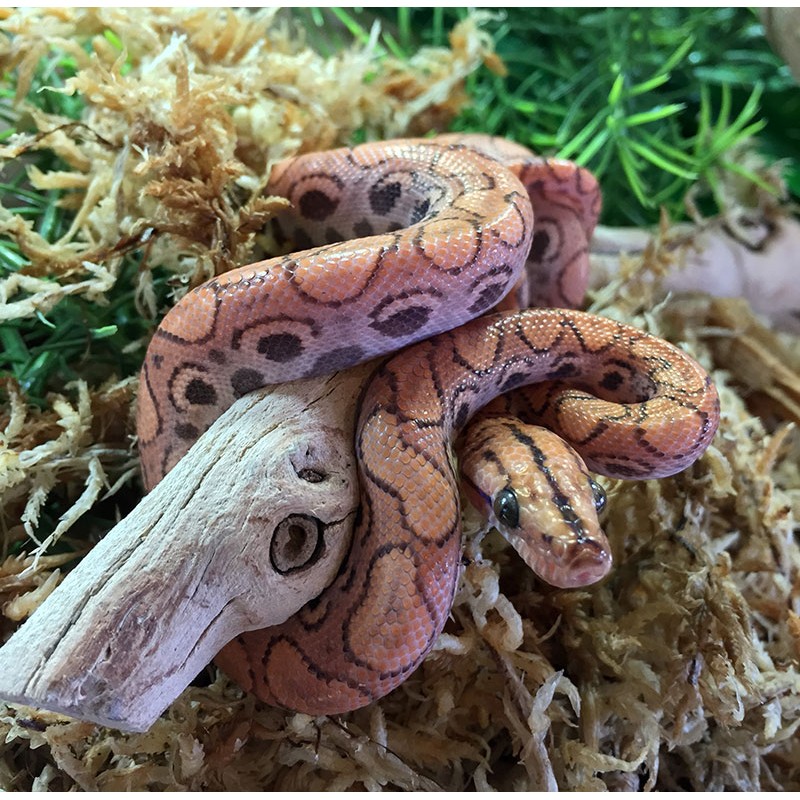

Furthermore, chromosomal mapping of telomeric sequences revealed the presence of interstitial telomeric sites (ITSs) on many chromosomes in addition to the terminal markings on all chromosomes of all taxa analysed, with the exception of E. hortulanus presented a totally different karyotype composition for the Boidae family, showing 2n = 40 chromosomes with a greater number of macrochromosomes. The three subspecies of Boa, two species of Eunectes and three species of Epicrates exhibit 2n = 36 chromosomes. amarali, Eunectes murinus and Epicrates crassus. The karyotypes of Boa constrictor occidentalis, Corallus hortulanus, Eunectes notaeus, Epicrates cenchria and Epicrates assisi are presented here for the first time with the redescriptions of the karyotypes of Boa constrictor constrictor, B. For a better understanding of the evolutionary relationship between these snakes, we cytogenetically analysed 7 species and 3 subspecies of Neotropical snakes from the Boidae family using different chromosomal markers. Many of these species are both morphologically and biogeographically divergent, and the relationship among some species remains uncertain even with evolutionary and phylogenetic studies being proposed for the group. Rainbow Boas are highly sort after within the pet trade, with Brazilian Rainbow Boas and Columbian Rainbow Boas being the most popular Rainbow Boas in captivity.Boids are primitive snakes from a basal lineage that is widely distributed in Neotropical region.

Rainbow boas prefer to hunt at night time and their usual prey includes rodents, birds and small mammals. Rainbow Boas are constrictors, which mean they kill their prey by coiling around it and stopping the air flow. Rainbow Boas are sometimes referred to as Slender Boas, as they are not as heavy-bodied as most of the other members of the family Boidae. Many boas, including Rainbow Boas, still have spurs on either side of the cloaca, which are said to be evidence of the pre-existence of limbs. In evolutionary terms, boas are a primitive species that have not evolved for many thousands of years. Rainbow Boas are part of the family boidae, which is part of the order Squamata, which includes all the scaled reptiles including all snakes and lizards. This iridescent sheen also makes Rainbow Boas one of the most visually attractive snakes in both the pet trade and the world. This rainbow effect is caused by the refraction of light as the Rainbow Boa’s scales act like mini prisms, due to tiny microscopic ridges that the eye cannot see. Rainbow Boas are so called because their bodies have an iridescent sheen that gleams with a rainbow effect, similar to the spectrum of colours that we see when oil is on water. There are 12 recognised sub-species of Rainbow Boa, which are defined by both their patternings and the location of their natural habitats. Rainbow boas are native to South America and can mainly be found in tropical and humid rainforests. If you have a related website and would like to link to The Rainbow Boa.co.uk please use the banner below: To visit the other websites in .uk Group please go to our links page uk is part of .uk group, a network of reptile and amphibian related websites giving care information on a host of exotic pets. The Rainbow Boa.co.uk is a non-profit website which has no annoying popup's. The Rainbow Boa is a website built with Rainbow Boa snake keepers in mind. The Rainbow Boa.co.uk was set up with the aim of helping other Rainbow Boa enthusiasts and people thinking about keeping a Rainbow Boas as a pet. You can also post photos, links and more. In The Rainbow Boa Forum you can chat/discuss with other forum users about your Rainbow Boa experience it's a good place to look for help if you have any questions regarding your snake. Whether you have a Columbian, Brazilian or Argentine Rainbow Boa we have all the information you need on general keeping and care. On The Rainbow Boa.co.uk you can find information on keeping Rainbow Boas.


 0 kommentar(er)
0 kommentar(er)
